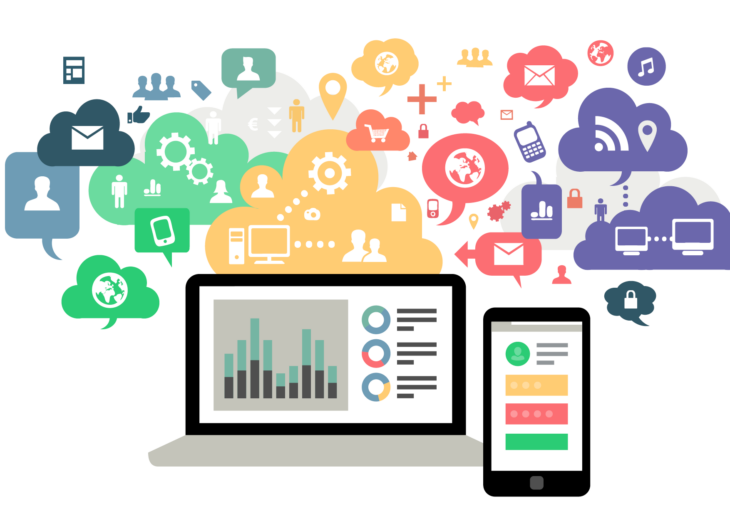Digital Customer Experience: Is that all there is?

Digital transformation is ubiquitous across industries. Success is measured by cookies, sessions, clicks, conversion rates and dozens of more quantitative metrics. However, do organizations know their customers? Do they understand the intent behind the click?
In recent years, full-service financial firms have undertaken multi-year digital transformation programs aimed at improving customer experience by making banking easy and convenient. Online and mobile functionality provide a dual benefit for firms – lower the cost of service while simplifying end-user experiences to match consumer expectations. Some firms went further, attempting to quantify engagement with customer experience measurement systems to understand customer journeys and validate investments in new features and products. Yet, fewer institutions integrate these measurements with employee engagement and performance data to drive action-oriented results across the enterprise. Regardless of their level of maturity, the need to transform – to continuously innovate – reflects a common requirement: everything must center around evolving customer expectations.
Continuous Innovation: Measuring New Forms of Engagement
Today, with all the tracking and metrics in place, some firms are moving from hard quantification of experiences to the science of qualification. After all, there are fundamental things in e-commerce, and life in general, that are largely based on factors like emotion, understanding, climate and attitude. How do companies track and measure these elements of a customer journey? How do they incorporate customer experience learnings and turn them into clicks?
The reality is that revenue growth remains increasingly challenged despite the many hard-fought battles to keep up with changing customer needs. It follows, then, that customer experience (CX) data has been leveraged primarily to remain relevant amid agile competitors and new market entrants. Market differentiation between firms today reflects a tug-of-war, amplified by even newer technologies set to enter the mainstream. Pressure is mounting for all to demonstrate they “…have the culture to loop customer feedback through the front line to improve behavior or connect it to innovation” (McKinsey).
Nevertheless, digital innovators at full-service firms continue to seek ways of simplifying the complexity of their business for end users, which includes employees. Robotic process automation, machine learning and artificial intelligence – to name a few – hold tremendous promise for firms to innovate and differentiate on CX. As companies invest to automate fundamental output and increase productivity among the workforce, they must also determine how to properly manage the tone of the workforce, as the drive for automation changes the requirements of the work itself. In doing so, they will look to measure improvement and differentiation through the integrated customer-employee experience, or risk disengagement across the value chain.
As with the past, as these technologies usher in another transformational era of customer and employee engagement, success depends greatly on organizations’ ability to collect insights from people. Customers literally entrust their lives to banks. Feedback is the critical evidence business leaders need that points to successful change management and execution as productivity tools are adopted to deliver tangible financial value and differentiate on experience. The fundamental question is how to manage these changes? McKinsey expertly points out in a recent study that “…implementing change is largely about influencing human behavior…and [requires] a strong conviction and understanding among employees about why the change is important for the customer, for themselves, and for the company.”
Change is Hard, Really Hard
You already know this, and you have the scars to prove it.
To fully understand some of the tectonic shifts still to come, consider one segment in the financial services industry: wealth management. Over the next few decades, roughly $30 trillion in assets will transfer from the Baby Boomer generation to their Gen X and Millennial children. With the eldest Baby Boomers now into their 70s, the transfer is already beginning. While this transition may occur slowly at first, it will accelerate suddenly before creating a defining moment for the wealth management industry. The embrace of robo-advisor startups is a case in point. It shows the changes that the convergence of new technology, evolving customer behavior and demand among large organizations for efficiency improvements will bring.
Questions remain, such as how will these new operating models create a sustainable advantage for full-service financial firms? More specifically, as the very nature of work changes with human-to-human connection decreasingly a part of day-to-day work routine, how will firms ensure their people (in some of the most important jobs across the firm) remain motivated and deliver customer experiences that delight and engage?
Industries of the future will be defined by wholly new customer interaction models and represented by new ways of working across organizations. Large organizations will need to hardwire feedback across the enterprise to identify, prepare for and manage these changes. Integrated feedback from customers and employees, rendered as actionable insights, will prove more than just another KPI and will help business leaders qualify where capital should be deployed to solve for an overall experience. Even more fundamentally, translating experience metrics into organizational and financial impact will enable leaders to set priorities and marshal engagement from stakeholders throughout their firms.
Planning for the Future, Today
Leading a forward-thinking discussion, Questback’s Justin Flanagan will present at this year’s Future Digital Finance on how leading firms are systematically linking feedback from experience measurement systems to navigate change in a rapidly evolving customer experience landscape. What is your firm doing to build an understanding of these secular shifts in customer expectations such that you can prioritize, gain consensus and deploy investment to take action?
Read more about Customer Satisfaction Surveys.
About the Author

Nick Leibowitz | Senior Account Executive at Questback
Nick is passionate about helping large organizations solve for the qualitative questions driving customer experience and future forms of engagement. Propelled by new and emerging technologies intended to complement fundamental outputs associated with customer service, Nick believes companies must account for – and manage – the tone of the workplace as the drive for automation changes the requirements of the workforce. Previously at IBM as a Client Executive on a large account team supporting a global bank, Nick witnessed firsthand (and in some cases facilitated on behalf of his clients) the disruption caused by FinTech startups whose customer-centric solutions threatened traditional operating models. Nick continues to assist financial services and insurance clients as they navigate changes associated with customer and employee expectations.










